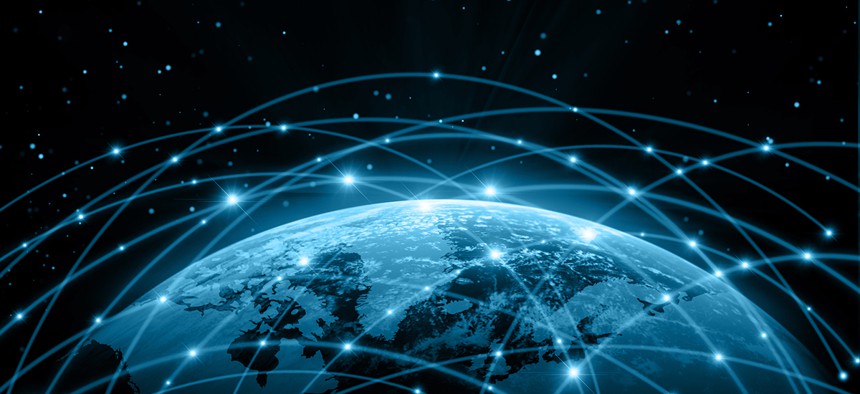Tools to Connect the Next Billion People to the Internet Have Been Hiding in Plain Sight

Toria/Shutterstock.com
Nearly half the world remains offline, and broadband adoption rates have been slowing down
The tiny island of Idjwi in the Democratic Republic of Congo has a population of over 250,000 people. Yet, until as recently as May of this year, fewer than 10 households had a computer, and none had internet connectivity.
Thanks to the efforts of a nonprofit organization called Ensemble Pour La Difference and an innovation consultancy named Fjord, more than 10,000 Idjwi residents now have access to weather forecasts, current agricultural prices, and news about travel safety via an internet-linked public-display system in their central market.
Finding new ways to connect the half of the world that remains offline is among the main reasons more than 2,000 people from over 100 countries gathered in Guadalajara, Mexico, last week for the Internet Governance Forum. The challenge is that nearly half the world remains offline, and broadband adoption rates have been slowing down.
This year’s theme, “Enabling Inclusive and Sustainable Growth,” linked internet connectivity to specific and measurable sustainable-development goals such as increasing economic opportunity, education, health and empowerment. Although a wide range of governments, companies and nonprofit organizations are experimenting with new ways to increase internet access to those around the world who need it, information about these efforts is nonexistent at worse—and haphazard at best.
1 World Connected is a newly launched initiative led by the University of Pennsylvania to gather and share information about innovative ways to connect people to the internet. So far, we have identified more than 200 case studies from across the world illustrating how individuals, companies, communities and governments have overcome barriers to provide access in their unique situations. These case studies demonstrate how the internet has empowered communities and transformed lives in the countries that need it the most.
For example, Mawingu Networks in Kenya provides affordable access to wireless broadband internet as well as device recharge facilities in the rural Kenyan counties of Laikipia, Nyeri, Embu and Meru. Using an innovative approach that combines unused TV frequencies and other areas of unlicensed spectrum, Mawingu provides internet access to 10,000 customers at $3 a month, and free access at schools, libraries and health centers.
Ever since students have been able to access the internet in schools in the area, Gakawa school principal Beatrice Ndorongo has reported that in two-and-a-half years, students have improved their scores in every single subject on the Kenyan National Exam.
In Zimbabwe, a telecommunications company called Econet Wireless is setting up off-grid cell towers to provide internet access and the first electric power to many parts of the country. A nonprofit organization called Energize the Chain is also partnering with Econet Wireless to deliver effective vaccines by setting up cold storage refrigerators alongside cell towers in far-flung rural areas. Through this effort, more than 250,000 young children in Zimbabwe have been vaccinated against preventable diseases, and similar efforts are being planned in Ghana and India.
These two case studies are representative of the ongoing efforts around the globe to connect the next billion people and the life-changing benefits that result. By systematically compiling all of these initiatives, 1 World Connected is helping other companies and the public learn from each of these success stories.
During the next phase of the project, we will begin gathering information about the effectiveness of each of these efforts and synthesizing it using a consistent approach that permits the cross-project comparisons needed to determine what really works. Detailed data about real-world implementations are vital for governments and other organizations that must face tough decisions about which projects to support, which technological approach to take, and what level of funding to provide.
Internet access can open up a world of opportunity for the more than half of the world’s population who are unconnected. We hope for rapid deployment to these communities so we all, together, can experience the life-changing benefits of the connected world.





